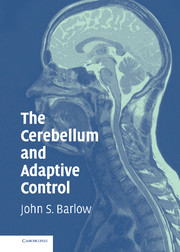Book contents
- Frontmatter
- Contents
- Preface
- Acknowledgments
- PART ONE ANATOMY AND PHYSIOLOGY OF THE CEREBELLAR SYSTEM
- PART TWO CEREBELLAR FUNCTIONS
- 7 Cerebellar Memory, Long-Term Depression, and Long-Term Potentiation
- 8 The Vestibulocerebellum and the Oculomotor System
- 9 The Cerebellum and Cognition
- 10 Timing Functions, Classical Conditioning, and Instrumental Conditioning
- 11 Cerebellar Pathology in Humans and Animals: Genetic Alterations
- 12 Specialized Cerebellum-Like Structures
- PART THREE MODELS AND THEORIES
- PART FOUR SUMMARY AND CONCLUSIONS
- APPENDIX A A Hybrid Analogue/Digital Multiplexer/Multiplier-Based Adaptive Signal Processor
- Author's Note
- Bibliography
- Index
11 - Cerebellar Pathology in Humans and Animals: Genetic Alterations
Published online by Cambridge University Press: 28 October 2009
- Frontmatter
- Contents
- Preface
- Acknowledgments
- PART ONE ANATOMY AND PHYSIOLOGY OF THE CEREBELLAR SYSTEM
- PART TWO CEREBELLAR FUNCTIONS
- 7 Cerebellar Memory, Long-Term Depression, and Long-Term Potentiation
- 8 The Vestibulocerebellum and the Oculomotor System
- 9 The Cerebellum and Cognition
- 10 Timing Functions, Classical Conditioning, and Instrumental Conditioning
- 11 Cerebellar Pathology in Humans and Animals: Genetic Alterations
- 12 Specialized Cerebellum-Like Structures
- PART THREE MODELS AND THEORIES
- PART FOUR SUMMARY AND CONCLUSIONS
- APPENDIX A A Hybrid Analogue/Digital Multiplexer/Multiplier-Based Adaptive Signal Processor
- Author's Note
- Bibliography
- Index
Summary
Synopsis of Principal Findings in Human Cerebellar Disease
To provide the elements of a clinical perspective, this chapter includes limited information about symptoms and signs of cerebellar disease in humans. From the wealth of available sources on clinical neurology, the material here has been adapted primarily from Victor and Ropper (2001), with additional material from the classical paper by Holmes (1939).
Lesions of the cerebellum in humans give rise to basically three types of abnormalities: (1) decrease of muscle tone (hypotonia), (2) incoordination (ataxia) of volitional movement, and (3) disorders of equilibrium and gait. Extensive lesions of one cerebellar hemisphere can give rise to all three types of abnormalities, on the same side as the lesion, as can lesions of the cerebellar nuclei and/or cerebellar peduncles. Lesions of the dentate nucleus or of the superior cerebellar peduncle result in the most severe and lasting symptoms.
Hypotonia, which refers to a decrease in passive resistance of muscles to movement (e.g., extension of a limb) is ascribed to a depression of gamma and alpha motor neuron activity, and tends to disappear with time.
The most prominent manifestation of cerebellar disease (i.e., abnormalities of volitional or intended movement) are included under the general heading of cerebellar incoordination or ataxia. These terms include dyssynergia, dysmetria, and dysdiadochokinesis (impaired or slowed repetitive reversals motion [e.g., of alternation or pronation-supination of the forearm; Fig. 11.1], or successive touching of each finger to the thumb). Complete impairment of such alternation maneuvers is termed adiadochokinesis.
- Type
- Chapter
- Information
- The Cerebellum and Adaptive Control , pp. 137 - 147Publisher: Cambridge University PressPrint publication year: 2002



